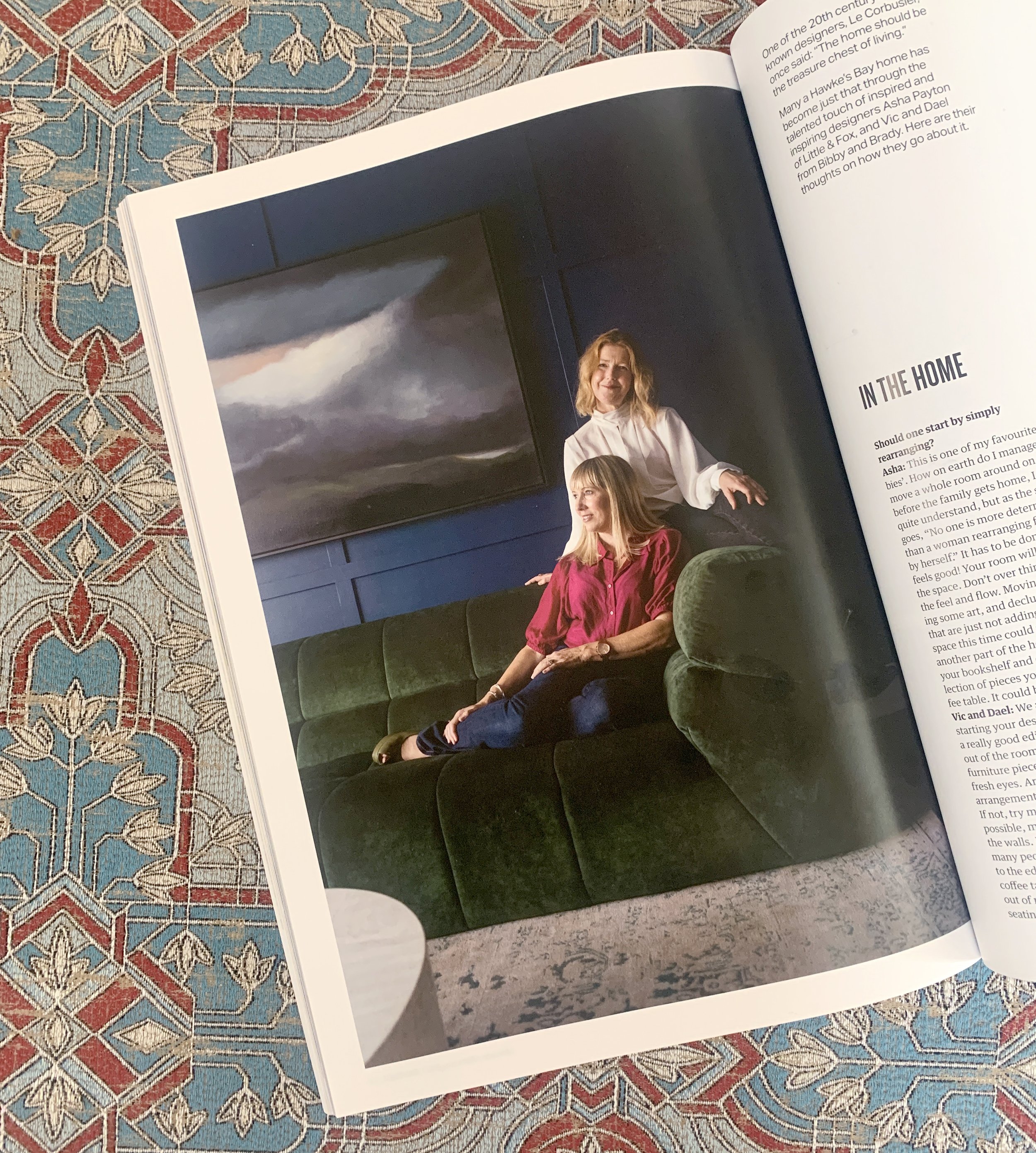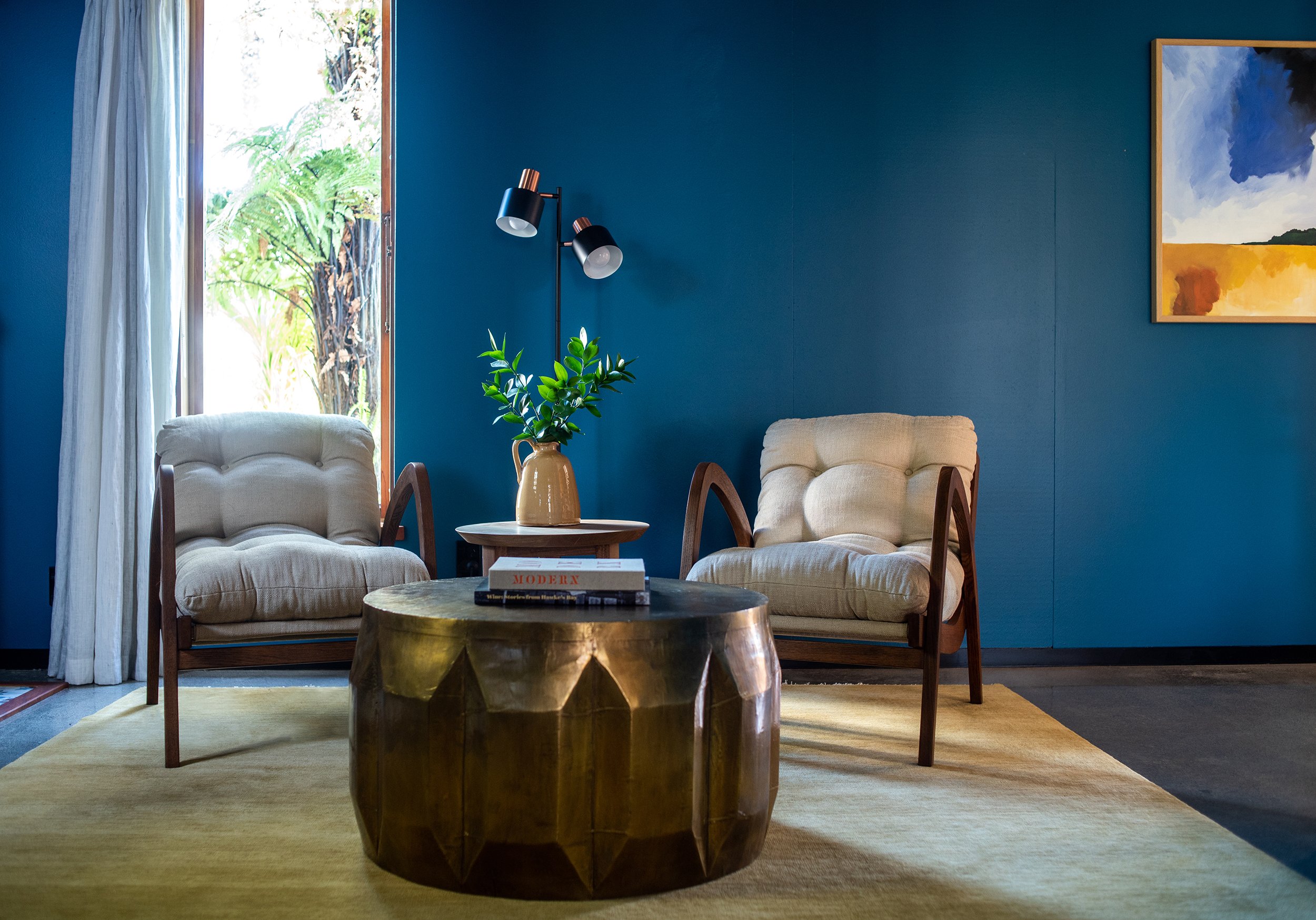At Bibby + Brady our aim is to create homes that are a joy to be in. Not only because they look beautiful, but because the functionality of the design changes they way our clients live, making everything easier and more enjoyable. The most rewarding part of the process for us is to see our designs come to life and witness the transformation of the space and life for it's owners.
photo: Florence Charvin
This is a bathroom we recently renovated as part of a larger home renovation. The room is used by the children of the house and guests.
The layout of the room actually worked well and by leaving the plumbing in the same place we saved time and money for our clients. We wanted a fresh look but one that was still relevant to the character of the villa, so we removed the wall tiles and clad the entire room in Hardie™ Groove lining. We retained a dado rail but took it much higher to line up with the top of the tiles in the shower.
photo: Florence Charvin
We chose a soft blue paint colour and wrapped it over the walls, ceiling, the door and all the frames to create a soothing, calm space. It also helps to blur the lines in a small room where there are a lot of elements.
The vanity is a similar shade to the walls and by having a wall hung option with air underneath, it creates a more spacious feeling in the small room. A custom mirror runs up to the dado line, and the curved bottom edges of the mirror along with the wall lights add a nice softness to juxtapose the straight lines. Touches of pink and watermelon red are a beautiful contrast to the blue.
photo: Florence Charvin
The bath tucks neatly into the left hand corner of the room and features a lovely curved right edge, which, again, adds a softness to the small room.
photo: Florence Charvin
We removed the old shower box and created a new modern shower with simple custom made glass walls on two sides. Inside we chose tiles with an artisanal handmade effect with subtle undulation. A large recessed niches provide a spot for shampoo and soap, with a smaller one below handy for shaving legs.
photo: Florence Charvin
photo: Florence Charvin
Because we kept the room very tonal and calm, we could afford to have a bit of fun with the floor tiles. The terrazzo-look tiles combine all of the colours in the rooms - blue/green, pink, black and white.
photo: Florence Charvin
Colour always plays a big part in our designs, even if it's a neutral palette. By saturating the room in this soft blue we've created a calm, welcoming space, and have been selective with the small bursts of visual stimulation.
photo: Florence Charvin
Despite what's going on in the world right now, home should always be a place for respite, to relax and recharge. We would love to help you create this in your home. Our goal will always be to effortlessly blend functionality with aesthetics, and make a house feel like a home. If you’re interested in working with us you can fill out this form to tell us more about your project.
photo: Florence Charvin
See more of this beautiful family home here.














